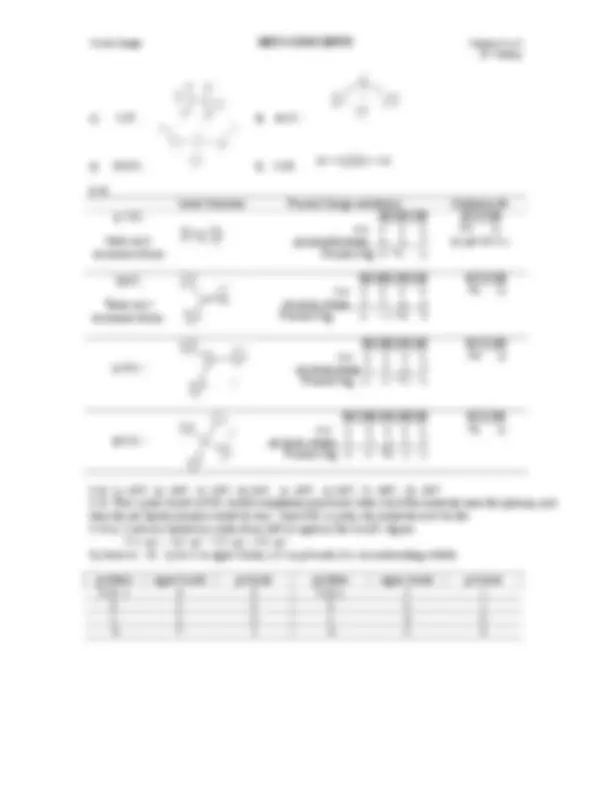



Study with the several resources on Docsity

Earn points by helping other students or get them with a premium plan


Prepare for your exams
Study with the several resources on Docsity

Earn points to download
Earn points by helping other students or get them with a premium plan
Community
Ask the community for help and clear up your study doubts
Discover the best universities in your country according to Docsity users
Free resources
Download our free guides on studying techniques, anxiety management strategies, and thesis advice from Docsity tutors
Material Type: Assignment; Professor: Ziegler; Class: General Chemistry I; Subject: Chemistry ; University: Central Oregon Community College; Term: Unknown 1989;
Typology: Assignments
1 / 2

This page cannot be seen from the preview
Don't miss anything!


10 th^ Edition
Answers to Problems not in the appendix: 8.1 a) Group IV (AKA 14) b) Group II (AKA 2) c) Group V (AKA 15) 8.8 a) The “octet rule” is the observation that atoms will gain lose or share electrons to achieve the stable configuration (full shell like the noble gases) of 8 valence electrons. The reason it is in quote marks is that it has so many exceptions, specifically, H, He, (which have a full shell of 2) and pretty much everything in the lower periods can have more than 8. b) S needs 2 more electrons. c) This configuration needs only 3 more electrons.
8.40 a) O-F < C-F < Be-F b) C-P< S-Br < O-Cl c) C-S < N-O < B-F
8.46 a) H 2 CO
H C H
O b) H 2 O 2
O O H H
10 th^ Edition
c) C 2 F 6
C C
F F F F
F
F
d) AsO 3 3-
As O O
O
e) H 2 SO 3
H O (^) S (^) O
H
O f) C 2 H 2 H^ C^ C H
Lewis Structure Formal Charge calculation Oxidation #s a) SO 2
there are 2 resonance forms
O S O
v.e- 6 6 6 -(e on each atom) 6 5 7 Formal Chg: 0 +1 -
(as per ch 4. )
b)SO 3
There are 3 resonance forms.
O S O O
v.e- 6 6 6 6 -(e on ea. atom) 7 7 4 6 Formal Chg: -1 -1 +2 0
c) SO 3 -
O S O
O 2
v.e- 6 6 6 6 -(e on ea.atom) 7 7 5 7 Formal Chg: -1 -1 +1 -
d) SO 4 -
O S
O
O
O
2 -
v.e- 6 6 6 6 6 -(e on ea. atom) 7 7 5 7 7 Formal Chg: -1 -1 +2 -1 -
9.32 The 3 polar bonds in PH 3 would completely cancel each other out if the molecule were flat (planar), and then the net dipole moment would be zero. Since PH 3 is polar, the molecule can’t be flat.
b) total v.e-: 36 c) 26 e- in sigma bonds, 2 e- in pi bonds, 8 e- in nonbonding orbitals
problem sigma bonds pi bonds problem sigma bonds pi bonds 9.25 a 4 0 9.26 a 3 1 b 5 0 b 6 1 c 3 2 c 4 0 d 7 1 d 5 2